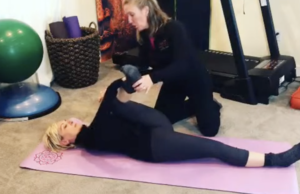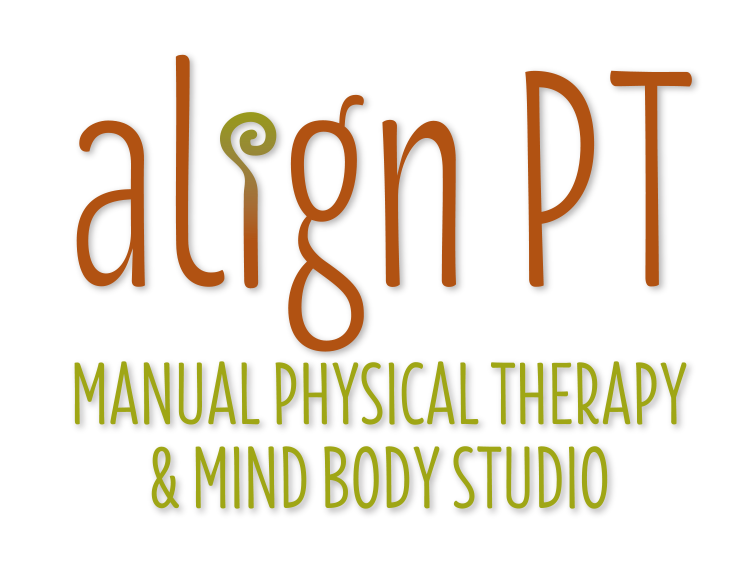by Keelin Regan-Reed PT, DPT ~
Physical therapists will often focus mainly on strengthening the abdominals (“abs”) when treating lower back pain. Some success in alleviating lower back pain can be achieved through exercises that strengthen the abs, but that fixes only part of the problem. One must consider the big picture. We need to look at all the muscles surrounding the back and pelvis when treating lower back pain.
It’s important to understand that the bones in a person’s body are able to move because of the presence of muscles. Muscles act as both the supporters and protectors of our joints, organs and bones, as well as the primary system that moves the human body.
Your trunk needs muscles
- To support the spine (vertebrae) like walls that hold the framing of a house in place.
- To protect the vital organs such as kidneys like the vault around a bank’s safety deposit boxes.
- To rotate and bend the trunk and spine, like strings move a puppet.
Recurring back pain that’s resistant to treatment with medicine and/or surgery can result from imbalance and/or loss of flexibility in important muscle groups. I’ve successfully treated chronic back problems in patients who have tried all kinds of other techniques without success.
I’ve been able to achieve results because I look at the bigger picture. In addition to the alignment of bones, joints, and nerve tension, I test all the muscles that surround the pelvis and back for both flexibility and strength. I usually find common dysfunctions in areas like the gluteals and hip rotators. These are areas that are often mistakenly ignored when treating back pain.
The gluteals, or buttocks, are the largest muscles in your body. They not only provide movement of your hip joint but also act as stabilizers of the pelvis on which the spine sits. When they don’t work properly there’s a direct effect on the back. The hip rotators act as important anchors to help your trunk and pelvis to stabilize and function properly. Think of these muscles as the stand that helps hold up your Christmas tree.
Your internal and external hip rotators are made up of 16 different muscles that attach from your pelvis and sacrum to your femur. They not only help connect your pelvis to your back, but they play a vital role in supporting the inner structures of the pelvis. They have often been called the rotator cuff of the hips. These are my favorite muscles in the body and are the muscle group that most often needs treatment when people come to see me.
The hip rotators allow certain movements of your leg and hips like crossing your legs, tying your shoe, and changing simple body positions. When they’re tight or weak they affect the support and function of your lower back, hips, knees, and legs, down to your feet. Complaints from people who have tight and weak hip rotators can include sciatica, chronic lower backache, sacroiliac (SI) joint pain, hip bursitis, knee pain, and even plantar fasciitis or heel pain.
When the hip rotator muscles are treated in the correct and appropriate way, they can be the single most important and effective contributors to pain relief. I believe this is the case because the hip rotators are very often ignored or worked on incorrectly. Although hip rotators do not account for everyone’s pain, they’re a common area I often see as needing extra help.
Below is one of the most effective ways I have found to stretch the gluteals and hip rotators mentioned in this article. If you’ve got tight hips and gluteals, give it a try and see if it helps relieve tension in that region of your body.
Gluteal Stretch Video
Of course, the very best way to find out what course of action is the best for your back pain is to have a thorough biomechanical physical therapy evaluation to find out where the source of your back pain is coming from. Getting to the root of the problem isn’t usually something most people can figure out on their own. If you are in the Longmont/Boulder area, we’re happy to offer a Free Discovery Session to talk about what might be happening with you. Contact Us to Schedule.


Hey there,
I would like to view the video recommended here by Keelin in this article, but this link circles around to the same article, but no video. I have tried going to youtube, by copying and pasting that strange looking link, etc. to no avail.
Also, just a tiny thing, the video that you posted of me talking about the greatness that Keelin provided for me to reduce almost all of my back issues has my name spelled wrong. Can you correct that pretty please to Laurie instead of Lori? That would be amazing. Let me know how I can view the “most effective ways to stretch the glutes and hip rotatrs mentioned in the article. Thank you, Laurie
It’s all fixed, thank you for the head’s up. We had our website revamped and some links and things got lost in the shuffle.
We fixed your name too 🙂